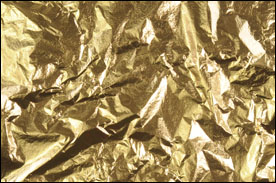It was good to finally see a private equity investment in a development zinc project announced this morning. Greenstone Resources LP announced a $12 million dollar equity investment in North River Resources plc to reopen the old Namib Mine in Namibia. It is a well structured investment but it is a drip feed of funds into the project as it is de-risked and certainly not anything even close to a significant deployment of capital from a decent sized fund. North River has as part of its plan the idea to retreat tailings to get to early cash flow. This investment seems to tick many of the boxes for private equity funds right now such as a mine development project with probably relatively low capital cost and near-term cash-flow and with potential for more resources within sight of the head-frame. But it is a small deal and given the small size of the currently identified JORC resource I would like to see higher grade – just less than one million tonnes averaging 5.7% zinc and 2.4% lead.
Namibia is making news because on Tuesday QKR partnered with Namibia’s State-owned mining company Epangelo in the $110 million acquisition of the Navachab gold mine from AngloGold Ashanti. The Navachab open-cast mine produced 63,000 ounces of gold last year and has 2.05 million ounces of gold reserves ( grade 1.26g/t) and resources of nearly 5 million ounces at a more modest grade of 1.14 g/t. For many years Navachab was Namibia’s only gold mine and this is described as QKR’s first major deal in the mining space. QKR is jointly owned by Quatar Holdings LLC which is an offshoot of the Quatar sovereign wealth fund and by Kulczyk Investments which is effectively a private equity fund owned by Jan Kulczyk arguably Poland’s richest man who made a fortune in the brewing business. So deep pockets at QKR and lots of capital to deploy in the targeted acquisition of superior mining projects in a distressed market. These bigger funds such as Mike Davis’ X2 Resources and QKR were set up to acquire and sweat non-core mining assets shed by Majors in turmoil. Both these deals are hardly significant investments relative to the size of the funds. One can only conclude that there is a lack of quality out there or the vendor’s are not as desperate as the smart people think. I hope that the investors in these funds have patience as a virtue if not of Job.
There is no reward without risk and there is no growth without risk. The world’s population is getting bigger and more demanding. For sure there is a vast iceberg below the water of struggling masses but the challenge in the future will be to lift the destitute to self-sufficiency and dignity. Resources and metals are so fundamental to our civilization that we cannot simply be apathetic and complacent and about how we will meet our basic needs in the future. Right now it seems small is beautiful in mine project development. I keep hearing from funds that “we like development projects with high-margins and low capital cost that are quick to cash-flow”. It is like a mantra around the City. In geology parlance that means finding extensions to ore bodies within sight of the head-frame. But that gets you only so far. That is nibbling around the Zakuski when what we need is the main course and at least the scent of delicious new dishes coming from the kitchen. To some extent in Africa the more adventurous have plumbed the depths of the great continental exploration databases generated by BRGM and the Soviets. In my experience, apart from statistics, I have never found anything useful generated by the USGS or BGS which I was able to practically apply to any exploration in Africa. In the past, BHP for one undertook very comprehensive regional exploration surveys but I do not see any major mining companies continuing in this vein. With cash-strapped Junior’s unable to attract investment for early stage exploration and the major mining groups, strategic investors and private equity funds focused on supposedly big-end M&A deals the question is who we will fund the exploration to sample the termite mounds across the river and beyond the frontier?
In April the global economic report of the International Monetary Fund said that China’s hunger for commodities is far from being satisfied any time soon. Most importantly it said that demand is likely to switch from and emphasis on iron ore and copper toward higher value commodities such as zinc. Maybe this is because zinc demand is largely driven by its use for galvanizing steel in the production goods such as cars and white goods which the poor aspire to own.
I also note in China that Dezheng Resources pledged the same stock of base metals in its warehouses as collateral to several different lenders. Is this the tip of the iceberg? The multiple leveraging of metal stocks sitting in depots to effectively finance some of its consumption is surely commerce with the stability of a house-of-cards. Like many things in China the scale of these activities is hard to quantify and to gauge its relative importance within the market. What this may point to is increasing volatility along an upward trajectory in the price of zinc and other base metals.
I was also encouraged but not surprised to see that Standard Bank has increased its 2015 price forecast for zinc by almost nine percent to US$2,240. I still think this is a conservative outlook but what would I know.


At least it’s some Encouragement John !!!
With Minerals like Lead and Zinc Ores : there is always the possibility of getting enrichment, due to weathering Processes which can give High Grade Ore which may need less treatment to get it to a Concentrate Grade.
The Ancient Latin Author, once said something like ;
” To have begun a task is to have half done it ”
Michael